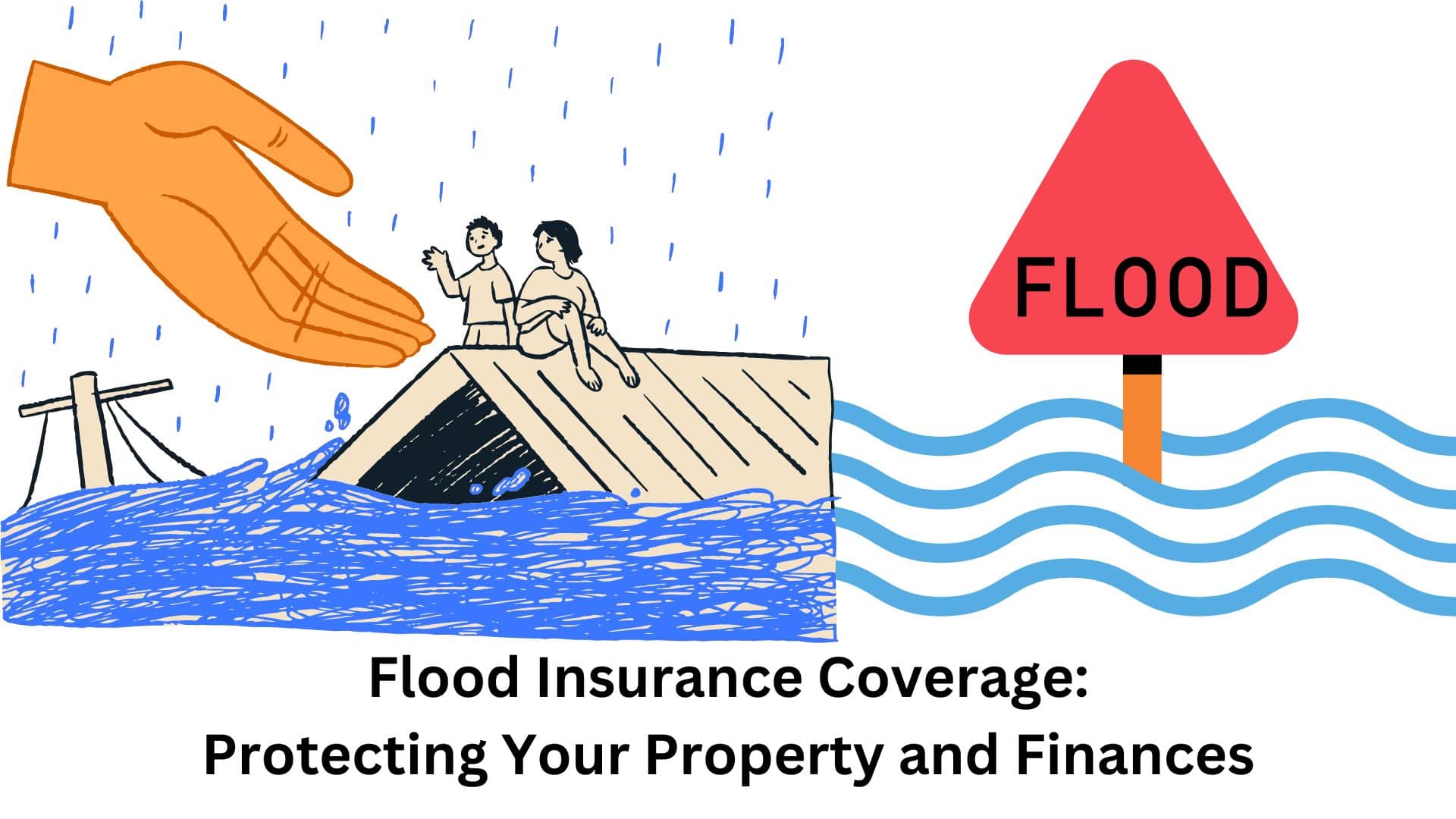Insurance policies always have exclusions and limitations, and flood insurance is no exception.
It’s important to understand what is not covered by flood insurance so that you can make other arrangements if necessary. For example, most flood insurance policies do not cover damage caused by sewer backups or sump pump failures unless there is a direct result of flooding.
Other items commonly excluded from coverage include valuable papers such as stocks and bonds, currency, precious metals, business interruption losses or loss of use, temporary housing expenses incurred during repairs to the insured property after a flood event has occurred etcetera.
Some policies may also exclude coverage for swimming pools above ground level (unless they are entirely underground), detached structures like fences and sheds, landscaping features such as trees or plants etcetera.
Keep in mind that these are general examples; each policy will have its own specific exclusions and limitations which should be reviewed carefully with your agent.
While it is true that flood insurance is vital for safeguarding against losses caused by floods, one must be familiar with the policy’s exclusions and limitations. Some common things not covered under a flood insurance policy are damage from sewer backups, seepage through groundwater or water that enters a property through the windows.
Additionally, coverage limits or specific conditions may apply to certain types of property like detached garages, basements and contents kept below ground level.
It’s important that homeowners review their policies with an agent so they know what is covered and where there might be gaps in protection.
How to File a Flood Insurance Claim
If you have suffered flood damage at your home or business, filing a claim quickly and accurately is essential to starting the recovery process. Contact your insurance agent or company as soon as possible after the event occurs so that they can begin working on your behalf.
To support your claim, document everything: take photographs or video footage of any damaged areas; make lists of damaged items with their values attached if known – these will help prove what was lost when it comes time for reimbursement. An adjuster will visit the property (usually within days) to assess how much needs fixing/replacing and pay out accordingly (less deductible).
Work together with them by being open about all issues faced during this difficult period while also cooperating fully until settlement finalises which ensures smooth procedure ends fast enough too.
Costs and Premiums
Different factors will influence how much you pay in premiums for flood insurance cover such as risk level of area being insured against flooding; maximum payout limit set forth by insurer among others but not limited too so don’t hesitate ask questions before signing up anything binding agreement based upon reading this article alone!
NFIP policies charge standard rates according mainly building type/structure located in particular elevation zone + other relevant considerations whereas private insurers use additional criteria like previous claims history etc..so prices vary greatly between providers even those who provide same product
Ways to reduce cost of flood insurance:
Raise foundation – this will help protect against any seeping water from entering building during times when floods occur frequently around such areas thus reducing chances getting damaged by same event over again.
Get higher deductibles – if homeowner goes with higher deductible they can end up paying lower premiums since policyholder must cover some portion themselves before insurer kicks-in rest
Take preventive measures – one way may be constructing catchment tanks which store rainwater that would have otherwise flooded homes thereby saving lots money spent on premiums every year.
Nonetheless, government assistance programs are available to homeowners and renters impacted by flooding. In addition to flood insurance coverage, these include grants and loans from FEMA (Federal Emergency Management Agency). Grants can be used for repairs or replacements while low-interest loans could supplement what is covered under an existing policy. It’s worth noting that such aid may also come in handy for people looking forward towards future disasters as they may want to take precautions against them or live somewhere else.
Criteria for eligibility usually depends on how much was destroyed financially speaking as well as whether person complied with all necessary paperwork relating thereto; therefore individuals should explore their options carefully in order not miss out anything important due ignorance.
Preparation Tips For Floods
In terms of financial protection flood insurance is essential but along side it there equally important proactive measures aimed at reducing risks associated with flooded properties.
Below are several tips to help minimize potential damage caused by flooding:
Raise utilities like electrical panel boxes, heating systems above expected flood levels – this prevents them from being affected when water comes into contact with electricity thereby causing short circuits.
Use sand bags/flood gates where necessary so that buildings do not get infiltrated by water during heavy downpours which often lead to flash floods especially within urban settings having poor drainage systems.
Create good landscaping designs which allow easy flow surface runoff away houses towards natural drainage channels hence cutting down chances getting flooded even during torrential rains experienced periodically over certain regions.
Come up with a comprehensive emergency plan that specifies evacuation zones, communication methods and emergency contact details for all household members including pets.
Have a kit that is well-stocked with essential supplies in case of emergencies. These supplies should include food, water, medicine, flashlights, and first aid kits for your whole family during flood events.
FAQs
What does flood insurance cover?
Flood insurance is coverage for damages caused by rising water to the structure or contents of your house. This includes walls, floors, furniture appliances and personal belongings among other things.
How does flood insurance work?
Flood insurance works by providing financial protection against losses due to floods. Policyholders pay premiums which are used as fund from where claims can be paid when they occur within policy limits.
Is flood insurance mandatory for homeowners?
It’s not always necessary but lenders might require it if you live in a high-risk area for floods.
What is the NFIP?
NFIP stands for National Flood Insurance Program; it’s a government initiative that provides affordable flood coverage to property owners in participating communities across U.S.A
Are there alternatives to the NFIP for flood insurance?
Certainly! There are private insurers who offer coverage against floods outside of NFIP. Such companies may provide different types of policies with varying options and rates compared to those offered under this program.
Conclusion
Insurance against flooding is vital because it safeguards homeownership and business investment. It helps people recover financially from such incidents while giving them peace of mind knowing that their properties are protected through this scheme.
Homeowners can lower the impact on their homes and finance by understanding what each type covers, estimating potential damage amounts according to location-based risks maps plus preventive steps taken like sealing basements etcetera which reduce chances waters reaching interior spaces during heavy storms thus causing more destructions than necessary mainly if insured through either federal or private means not forgetting about considering various forms of financial support whenever faced with calamities arising out natural disasters involving overflowing rivers alongside other bodies running across lands towards oceans or sea




